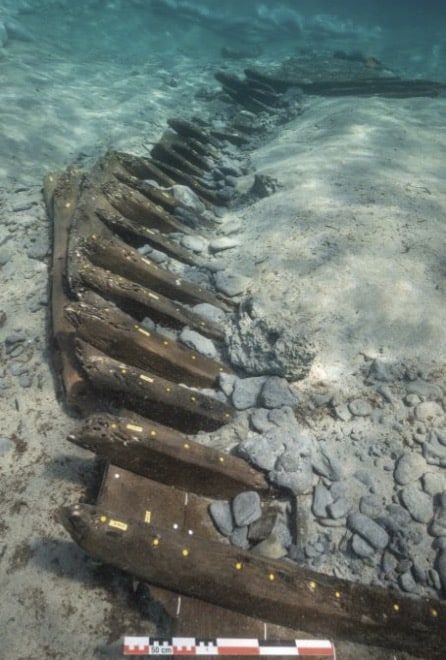Study of the ballast of the Roman Republican wreck of Ilovik-Paržine in Croatia: how did the geology of the carbonates help identify the construction site of an ancient ship?
An interdisciplinary team of scientists (CEREGE, Camille Jullian CentreUniversity of Lyon, University of Ferrara, Croatian Conservation Institute) has analysed the ballast found on the shipwrecked ancient Roman vessel Ilovik-Paržine-1, which was found off the Croatian coast in 2016.
Analysis of the carbonate rocks in the ballast, carried out by the CEREGE (F. Fournier, P. Léonide, L. Marié), revealed that the rocks most likely came from the region of Brindisi, in Puglia (Italy). This discovery led scientists to assume that the ship had been built in a shipyard in or near this ancient city. The results were published in Journal of Archaeological Science: Reports.
In 2016, around 500 metres off the coast of the small Croatian island of Ilovik in the Adriatic Sea, the wreck of an ancient ship called Ilovik-Paržine-1 was discovered. Between 2018 and 2022, underwater archaeologists from the Croatian Conservation Institute in Zagreb and the Camille Jullian Centre ("Ilovik-Paržine" programme) will work on the discovery of the wreck.Adriboats") studied the ship and determined that it was initially around 21.5 metres long and 6.5 metres wide, and that it was carrying wood and wine amphorae. Using radiocarbon dating and typological analysis of the ceramics, the archaeologists established that the shipwreck occurred between 170 and 130/120 BC.
In 2021, the archaeologists extracted a total of 854 rocks, ranging in diameter from 1 to 40 centimetres, some of which were subjected to sedimentological, petrographic, micropalaeontological and geochemical analyses (carbon, oxygen and strontium isotopic composition of the carbonates). The results showed that almost all of the ballast is quartz calcarenite of Upper Pleistocene age, deposited in a coastal marine environment. A field mission to analyse Pleistocene marine formations on the Adriatic and Ionian coasts of Italy enabled a direct comparison with the ballast rocks.
The high degree of homogeneity of the ballast elements suggests that it was probably permanent ballast, loaded during the construction of the ship in a shipyard in Brindisi or a nearby port. A second hypothesis would be to consider Brindisi, or a nearby port, as the ship's permanent home port, so that the volume of ballast was always adjusted from a single source of stone. The place where the shipwrecked vessel was found indicates that it was probably heading north, and that the final destination of its journey may have been one of the cities located in the northern Adriatic, such as Aquileia, an ancient Roman colony founded around 181 BC and of great commercial and strategic importance.
Fournier, F., Léonide, P., Marié, L., Quillevéré, F., Margerel, J.-P., Miholjek, I., Dugonjič, P., Carre, M.-B., Cavassa, L., Morsilli, M., Boetto, G., 2024. Provenance of the ballast stones from the Roman Republican ship Ilovik-Paržine 1: A hypothesis about its place of construction. Journal of Archaeological Science: Reports 57, 104580.


